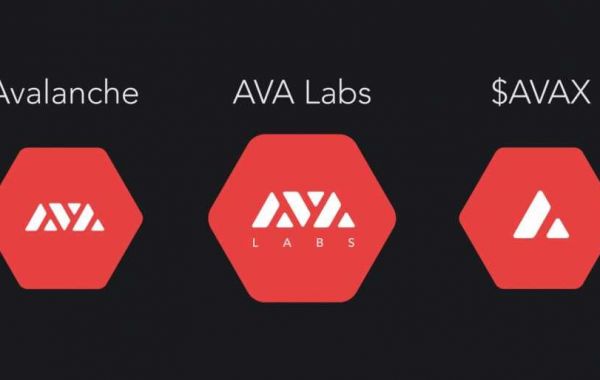What is Avalanche?
Avalanche can be classified as "Blockchain 3.0". It is a heterogeneous network of many blockchains. The implementation of a new consensus protocol allows transactions through the system in a few seconds, guaranteeing the same level of security as in traditional blockchain ecosystems.
Avalanchi becomes an “umbrella” protecting defi-projects from intruders. Developers have access to a set of tools for launching and deploying decentralized networks, identical to that of Ethereum, and at the same time all financial transactions are performed much faster.
Features of AVAX
The Avalanche platform consists of three main components: two blockchains (C-Chain and P-Chain) and a directed acyclic graph (DAG) known as the X-chain. The DAG structure differs from the traditional blockchain structure in which transactions are recorded in chronological order. Instead, the DAG links transactions together so that users don't have to wait for them to be merged into a block.
P-chain is the chain of the platform. She is responsible for blocking tokens for placing bets and implementing the consensus protocol. All transaction fees are payable to AVAX.
The Avalanche Contract Chain (C-Chain) allows developers to easily port Ethereum-based applications using the C-Chain API. All current Ethereum applications can switch to Avalanche to take advantage of higher bandwidth, faster rework, extremely low gas rates, and instrument reliability.
The X-Chain is a decentralized platform that allows you to create new assets, exchange and transfer tokens between subnets using the Avalanche virtual machine (AVM). X-Chain allows anyone to create or mint digital assets such as Stablecoins, Utility tokens, NFTs, stocks, etc. The system is based on UTXO, which is familiar to anyone who works with Bitcoin, Litecoin, Bitcoin Cash and other blockchains on SHA-256 and Scrypt algorithms.
All three components are validated and protected by primary network validators. Avalanche aims to become the "Internet of Finance" of which subnets are an essential component. Anyone can create individual networks with custom virtual machines (VMs) and validator rule sets. Any virtual machines such as BTC Script, EVM, WASM are allowed. Avalanche subnets can be configured for specific jurisdictions, allowing for the use of assets that are compliant with regulatory requirements.
One of the main advantages of the Snow group of consensus protocols is that they are protected against a 51% attack. At least 80% of the nodes in the Avalanche Network must collude to break the consensus.
Avalanche betting is completely consensus independent. Unlike Ethereum and similar platforms, delivered assets cannot be taken away from validators, which encourages wider participation. The stake is needed to protect the network from the Sibyl attack. For transactions on the Avalanche network, fees paid in the native AVAX token are continuously burned rather than going to the validators' balance. Thus, as the number of transactions increases and large amounts are transferred, the available supply of coins diminishes in order to benefit the ecosystem.
The fee is set by the function being checked, not by the issuer of the transaction. Simple transactions have the lowest fees, higher fees are charged for other uses of Avalanche, such as subnetting. Individual subnets can issue their own coins, but AVAX tokens are required to set up the subnet.
Where to buy cryptocurrency, available exchanges
You can find Avalanche (AVAX) on several top crypto platforms. The best of them is the Binance exchange, it supports six exchange pairs:
AVAX / USDT;
AVAX / TRY;
AVAX / BTC;
AVAX / BUSD;
AVAX / EUR;
AVAX / BNB.
This coin is traded on OKEx, Huobi Global and Bitfinex platforms. A complete list of platforms and exchange pairs, as well as the current Avalanche (AVAX) rate is available at https://letsexchange.io/exchange/avax-to-one
Development prospects
So far, Avalanche is superior to Ethereum and defi projects can easily migrate to this platform. However, they are in no hurry to do this and are waiting for the launch of Ethereum 2.0. So the success of AVAX largely depends on how successful or, conversely, failure will be the transition of Vitalik Buterin's team to PoS. Although serious problems with Ethereum can cause panic in the market and then investors will not want to invest in cryptocurrency.
Avalanche can be seen as a defense network during the transition to Ethereum 2.0, and what will be next is difficult to say. Perhaps the project will occupy a niche in the defi sector and be an alternative to Ethereum.
Conclusion
The Avalanche protocol provides a fundamental level of consensus for developers. High transaction speed, scalability, and support for other DeFi platforms provide competitive advantages. The blockchain industry continues to expand into the global financial system and a complete transition to mutual settlements in cryptocurrency is inevitable.







